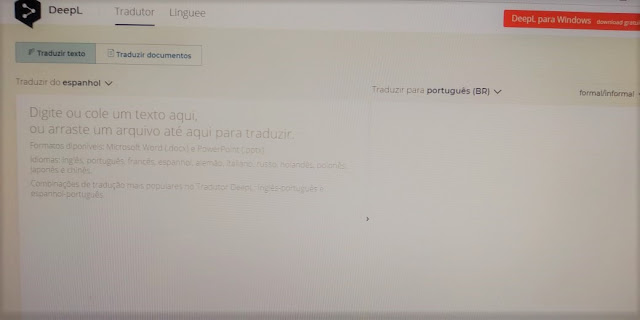Following a collaboration project initiated between the Centre for Technology and Society (CTS), of FGV School of Law in Rio de Janeiro, and the Innovation and Access to Knowledge Programme of the South Centre, an intergovernmental organization of countries of the South, it is with great pleasure that we make it public the first post kindly prepared by the latter’s experts:
I. Introduction
Member States of the World Intellectual Property Organisation (WIPO) met on 11-13 September 2006 for the Fifteenth Session of the Standing Committee on Copyright and Related Rights (SCCR) to discuss a Revised Draft Basic Proposal for a WIPO Treaty on the Protection of Broadcasting Organisations (WIPO document SCCR 15/2). The discussions on the Treaty began eight years ago as an attempt to address the issue of the protection of signal theft. The Member States of the European Union and broadcasting organisations sought protection for programme-carrying signals on the grounds that these can be stolen and retransmitted without permission through new means of transmission not covered in previous international instruments (i.e. the International Convention for the Protection of Performers, Producers of Phonograms and Broadcasting Organisations – the Rome Convention; and the Agreement on Trade-Related Aspects of Intellectual Property Rights – the TRIPS Agreement). What some expected to be a simple negotiation has become complex, since a great number of proposals have been submitted by WIPO Members over the eight year period. There has also been greater involvement by public interest groups in the last couple of years as well as by technology industries coupled with deeper analysis of the provisions of the draft treaty which was hitherto missing
The discussions on the draft of the Treaty on the Protection of Traditional Broadcasting Organisations, including cablecasting organisations, involve several controversial issues, such as whether the treaty should cover webcasting. Although the United States tried to push for protection of webcasting organisations in the draft text by arguing that the functional role of webcasting (transmissions through computer networks), and traditional broadcasting is similar, and that the only difference between them is the means of transmission, the U.S. proposal was not successful. As a result, protection of webcasting organisations was left out of the draft, but it will be part of a separate discussion in the SCCR, though fears have been raised that some of the language in the draft text would still cover some form of webcasting.
II. Recommendation to the WIPO General Assembly
Notwithstanding the contentious debate in the Fifteenth Session of the SCCR on various substantive issues and the clear lack of agreement on many of these, the SCCR under pressure from the Committee Chairman agreed to recommend that the WIPO General Assembly, scheduled to meet from 25 September 2006, decide that: (a) the Revised Draft Basic Proposal (SCCR 15/2) would become the Basic Proposal for the Diplomatic Conference, which is the last step in the treaty-making process, subject to any proposals that might be agreed to at a special meeting in January 2007 or proposals presented by Members at the Diplomatic Conference, and (b) a Diplomatic Conference to negotiate and conclude the treaty take place from 11 July to 1 August 2007 in Geneva. While in normally the General Assembly simply endorses Committee recommendations, such recommendations could be modified or even rejected by the General Assembly.
III. Brief Analysis of the Key Issues Discussed at the Session
Some of the main issues discussed in the Session were the following: (a) preamble, objective and scope of the treaty; (b) the rights of protection; (c) exceptions and limitations to rights and (d) technological protection measures (TPMs). The following is a brief summary of the issues and the relevant discussions. The analysis is partly based on a pre-publication research paper released by the South Centre at the start of the session. The paper is available at the South Centre website. A series of other papers outlining concerns with regard to the Draft Basic Proposal were also presented by representatives of civil society, non-governmental organisations and industry at the session.
(a) Preamble, Objective and Scope
The delegations of India, Brazil, South Africa and the African Group, among others, argued that prior to beginning the discussion on substantive issues, such as rights to be protected, the objective and scope of the Broadcasting Treaty must be clearly defined. In particular, it is important to clarify that the rationale of the treaty is to protect broadcasters and cablecasters against signal theft. The object of the protection would be limited to the signal, and not extend to the content transmitted through the signal. One of the problems identified by delegations is that there is no definition of “broadcast” in the text of the Draft Basic Proposal, and it does not specify whether only broadcast signals are the object of protection. Although the objective of the Treaty might be obvious for many Members, because broadcasts represent the product of a broadcasting organisation, if explicit reference to broadcasts is not made in the objective of the Treaty and the objective is not clearly defined, it can be later argued that the object of protection is not the signal itself, but the signal and the content carried by the signal. Moreover, many delegations pointed that it is necessary to define whether the Treaty is limited to signal protection and takes a signal-based approach, or whether it takes a rights-based approach, in order to determine whether exclusive rights to broadcasters are warranted or not.
(b) The Rights to be granted to Broadcasting Organisations
The Draft Basic Proposal contains a number of exclusive rights that confer on broadcasters and cablecasters the right to control the signals, and as argued by various analysts and delegations, the content carried by the signals. Exclusive rights would create a dangerous additional layer of rights for broadcasters and cablecasters over those already granted to copyright and other related right holders. These provisions may pose serious risks for developing countries and Least Developed Countries where generally traditional broadcasting via TV and radio are the most important means of providing access to information. Articles 9 to 16 of the draft text contain the provisions related to the rights to be protected, which go beyond the provisions contained in the Rome Convention, Satellites Convention and the TRIPS Agreement.
(c) Limitations and Exceptions
Limitations and exceptions to the exclusive rights that may be provided to broadcasters and cablecasters are a core issue for developing countries. Limitations are extremely important in providing a balance between the rights of broadcast organisations and the public interest. The establishment of limitations and exceptions may allow governments to ensure public use of information and access to knowledge for their population, in particular, for those who do not have economic resources to pay for accessing such content. Several developing countries expressed support for alternatives in the text on limitations and exceptions that would provide for a non-exhaustive list of specific limitations and exceptions that leave enough flexibility for governments to establish policies that are necessary to protect the public interest. This was also supported by some developed countries, such as Canada. On the other hand, several developed countries such as the United States and Switzerland, expressed their preference for maintaining language on limitations and exceptions similar to that contained in the WIPO Performances and Phonograms Treaty (WPPT), which does not list specific limitations and exceptions.
(d) Technical Protection Measures (TPMs)
The discussion on the TPMs was highly contentions. TPMs refer to technological tools that may be used by the copyright owner, performer or phonogram producer to prevent or restrict non-authorised use and/or access to works in the digital environment. Concerns have been raised with the implementation of TPMs as they could block access by, for example, consumers to legitimate uses of content when it is in the public domain. According to some delegations, if TPMs were extended to broadcasting organisations and cablecasting organisations as proposed in the two alternatives in the Basic Draft Proposal, it would mean new obligations for WIPO Members, since neither the Rome Convention nor the TRIPS Agreement contains such provisions. In addition, some delegations, including Brazil, argued that TPMs are not relevant to protect signals, which is the objective of the Treaty, and would only serve to protect the content.
IV. Conclusion
The analysis of the provisions above, demonstrates that the Broadcasting Treaty contain provisions that may seriously affect developing countries. It also shows that the establishment of safeguard measures, such as limitations and exceptions are essential for assuring access to knowledge, in particular, for those who lack economic resources to pay for accessing information.
P.S.
Post by: Marcia Aribela and Viviana Munoz, South Centre.








